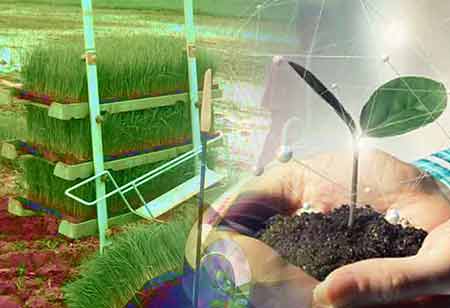Thank you for Subscribing to Agri Business Review Weekly Brief
The Increasing Acceptance of Precision Agriculture in the Soybean Industry
The digital transformation of soy farms benefits the environment, the rising population, and farmers' bottom lines.

By
Agri Business Review | Thursday, August 04, 2022
Stay ahead of the industry with exclusive feature stories on the top companies, expert insights and the latest news delivered straight to your inbox. Subscribe today.
The US has more than 500,000 soybean farmers. Nearly 18 percent of US agricultural exports are soybeans, making them the top export of the US.
FREMONT, CA: The United States has more than 500,000 soybean farmers. Soybeans are the leading agricultural export in the United States, accounting for over 18 percent of all agricultural exports. The majority of the nation's 515,000 soybean farmers are adopting digital transformation at an increasing rate. Using moisture sensors, intelligent irrigation, autonomous tractors with GPS capabilities, drones, and satellite imaging improves soy production. Precision agriculture enables farmers to increase their crops' productivity, quality, and uniformity. With this breakthrough technology, farmers can make tough decisions about the crop to increase food, fiber, and fuel production with fewer resources and a constant focus on quality.
The digital transformation of soy farms benefits the environment, the rising population, and farmers' bottom lines.
Digital technology, such as intelligent irrigation, is aiding in improving the nutrient efficiency and quality of soil, crop yield, and water conservation. It also enables farmers to manage pesticides more accurately for a healthier environment. Its ability to supply a more stable and sustainable food source is crucial for feeding the projected nine-billion-plus population by 2050.
When technology can be utilized to treat soil precisely as it should be treated, in conjunction with genetic engineering to produce seeds and crops more resistant to natural disturbances, farmers may build a real sustainability system.
This strategy promotes the long-term environmental sustainability of the earth but also the economic sustainability of the farmers.
Aerial imagery
Modern farming technology is advancing not only in the fields but also in the air. Utilizing drones allows soybean farmers to view their crops from above, saving them time since they no longer need to walk the field. Farmers in Minnesota, such as Rochelle Krusemark, spent more than 30 hours per week scouting her 160-acre field; however, she can now study the same crops in approximately 15 minutes.
Drones have been one of the significant technological game-changers in agriculture and have brought about a monumental transformation in the agricultural industry.
Vegetation indices, which provide important insight into the state of the crops, are an essential piece of information to evaluate. For instance, the Normalized Difference Vegetative Index (NDVI) measures the amount of solar radiation a plant reflects and absorbs at different wavelengths, as well as the level of vegetation on the field, allowing the farmer to identify problematic areas of the field at various stages of plant growth or where weeds are too close to the soybeans.
For example, EOS partnered with Epik Systems to deliver useful data in precision farming and greenhouse gas (GHG) tracking, estimating, and mitigation to small-scale farmers in agricultural areas without precision farming or carbon monitoring. Initially, the technology will be implemented in the United States and Mexico.
It is difficult for small-scale farmers to produce more without access to the appropriate digital transformation technologies. To employ digital transformation to reinvent the future of food, the agriculture industry and its leaders must remain unwaveringly committed to enhancing their environmental, social, and economic sustainability. Not only has digitization improved sustainability and data-driven efficiency, but it has also enabled the establishment of businesses that can be passed on to the next generations.





